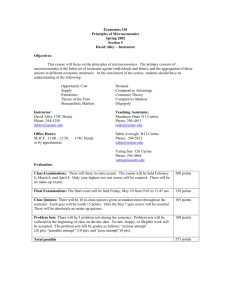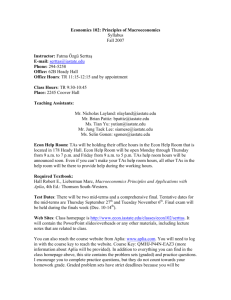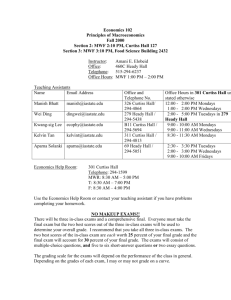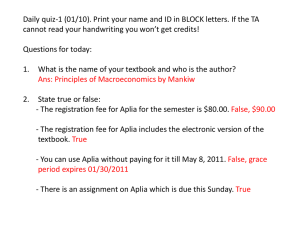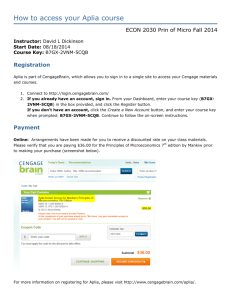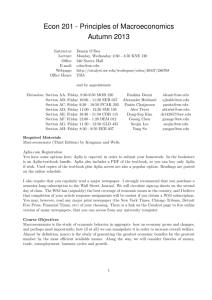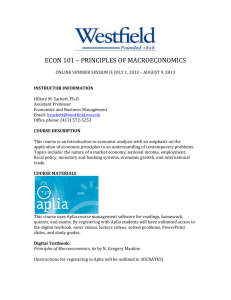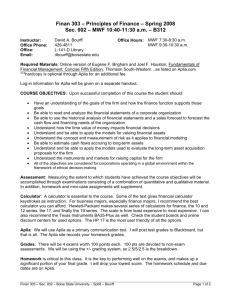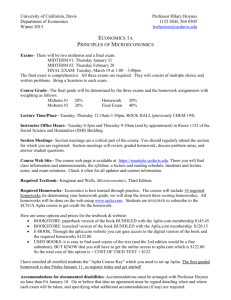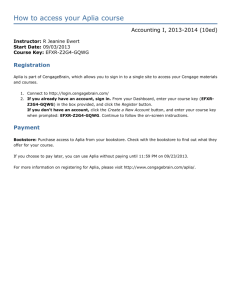Iowa State University
advertisement
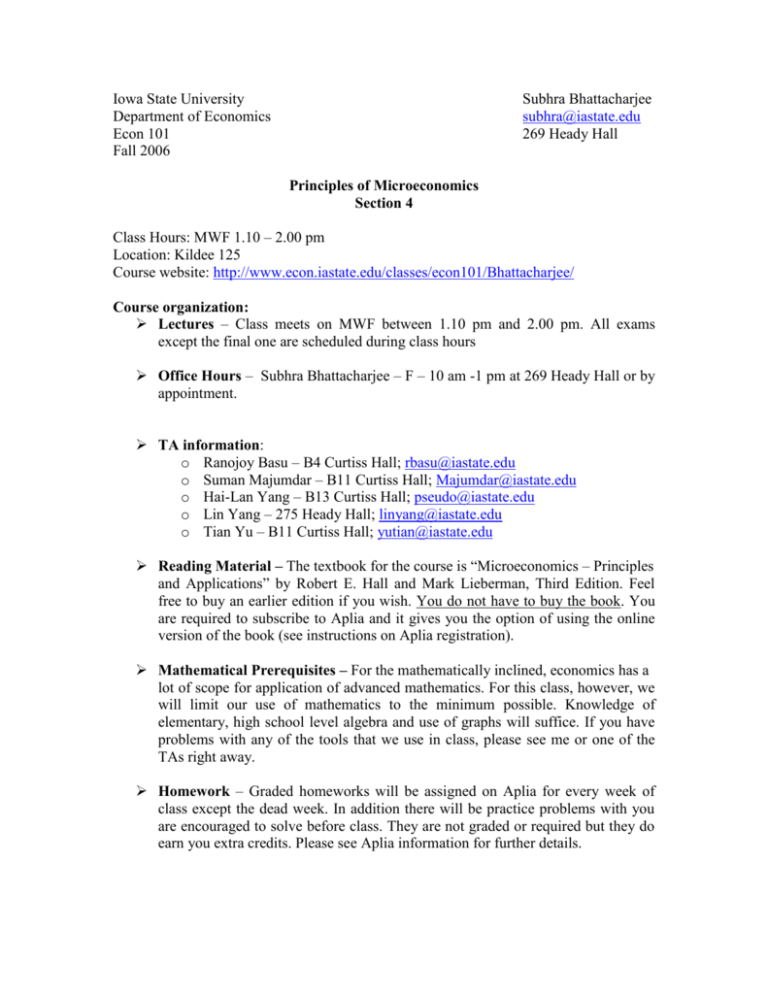
Iowa State University Department of Economics Econ 101 Fall 2006 Subhra Bhattacharjee subhra@iastate.edu 269 Heady Hall Principles of Microeconomics Section 4 Class Hours: MWF 1.10 – 2.00 pm Location: Kildee 125 Course website: http://www.econ.iastate.edu/classes/econ101/Bhattacharjee/ Course organization: Lectures – Class meets on MWF between 1.10 pm and 2.00 pm. All exams except the final one are scheduled during class hours Office Hours – Subhra Bhattacharjee – F – 10 am -1 pm at 269 Heady Hall or by appointment. TA information: o Ranojoy Basu – B4 Curtiss Hall; rbasu@iastate.edu o Suman Majumdar – B11 Curtiss Hall; Majumdar@iastate.edu o Hai-Lan Yang – B13 Curtiss Hall; pseudo@iastate.edu o Lin Yang – 275 Heady Hall; linyang@iastate.edu o Tian Yu – B11 Curtiss Hall; yutian@iastate.edu Reading Material – The textbook for the course is “Microeconomics – Principles and Applications” by Robert E. Hall and Mark Lieberman, Third Edition. Feel free to buy an earlier edition if you wish. You do not have to buy the book. You are required to subscribe to Aplia and it gives you the option of using the online version of the book (see instructions on Aplia registration). Mathematical Prerequisites – For the mathematically inclined, economics has a lot of scope for application of advanced mathematics. For this class, however, we will limit our use of mathematics to the minimum possible. Knowledge of elementary, high school level algebra and use of graphs will suffice. If you have problems with any of the tools that we use in class, please see me or one of the TAs right away. Homework – Graded homeworks will be assigned on Aplia for every week of class except the dead week. In addition there will be practice problems with you are encouraged to solve before class. They are not graded or required but they do earn you extra credits. Please see Aplia information for further details. Exams – There will be eight exams spaced out over the duration of the course – roughly one each alternating week. The dates for the exams will be posted on the website and announced in class well in time. All exams except the final will take place during class hours. There will be no make up exams but your two lowest scores will be dropped while calculating your grade. Final Grades – Your final grades will be computed as follows: Homeworks – 10%; Each exam - 15% Extra Credits – A set of practice problems will be assigned on Aplia every week on the topic to be covered that week. These are not graded and you get feedbacks on them right away. You are encouraged though not required to solve them before a topic is taught in class. If you attempt every single one of these practice problems during the semester and get at least 40 percent of the questions correct, you earn 5 extra credits to be added on to the final grade. That can make a difference of a single grade, i.e take you from a B+ to an A- or from an A- to an A. Disabilities: If you have a disability and require accommodations, please contact me right away so that your learning needs may be appropriately met. No retroactive accommodations will be provided in this class. You will need to provide documentation of your disability to the Disability Resources (DR) office, located on the main floor of the Student Services Building, Room 1076, 515-2947220. Help room: The economics Help Room is located in 178 Heady Hall. Tentative hours: MTWR 9-6, F 9-4. It is manned by graduate TAs who will be able and willing to help you out with any questions you might have regarding the material or mathematical techniques. They will, however, not solve entire homeworks for you. Other Stuff: If you find that you are unable to understand lectures or have any other problems, it is a good idea to get in touch with the TAs or me right away. Do check the course website regularly for announcements and other information relating to the course. List of Core Topics 1. What is economics? Microeconomics and Macroeconomics. The ‘model’ as a means of analyzing real economic events. Why economists disagree. Opportunity cost. 2. The basic units of microeconomic analysis – buyers, sellers, markets. Firms, households, markets. Demand and supply. 3. Mathematical preliminaries. 4. Topics in demand and supply 5. Theory behind the demand curve – theory of consumer behaviour. 6. Theory behind the supply curve - Production theory. 7. Theory of the firm – profit maximization. 8. Market structures: Perfect competition, monopoly, monopolistic competition, oligopoly. Why is market structure important? 9. Perfect Competition 10. Monopoly 11. Monopolistic competition 12. Oligopoly. Introduction to game theory. 13. Game theory: Origin, areas of application, definitions. Prisoner’s dilemma, Battle of the sexes. Pure strategy Nash equilibria. 14. Economic efficiency 15. Comparative advantage and gains from international trade
